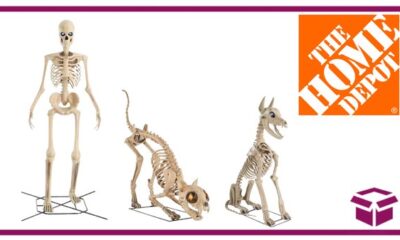Health
New Study Reveals Brain’s Dynamic Learning Mechanisms

Understanding how the brain encodes and applies rules is crucial for deciphering the neural basis of flexible behavior. A recent study conducted by researchers at the University of Toyama in Japan has unveiled that the dynamics of neuronal activity in the medial prefrontal cortex (mPFC) play a significant role in how procedural rules are learned and executed. The findings, published in Molecular Brain on July 1, 2025, provide new insights into the brain’s adaptability during learning processes.
The research team, led by Assistant Professor Shuntaro Ohno, utilized a Y-maze task to observe the learning behaviors of mice. Initially, the mice were allowed to explore the maze freely. Each mouse had to wait in a designated area referred to as the “Zone” before responding to a light cue, directing them to a water container known as the “Port” for a reward. As training progressed, the mice exhibited quicker and more successful navigation to the reward, despite following the same physical paths.
To monitor the neuronal activity, the scientists employed calcium imaging to capture the activity of hundreds of mPFC neurons. This innovative approach allowed the team to analyze how neural populations changed throughout the learning process. The research discovered that the sequences of neural activation became more defined and predictive of success as the training advanced.
Understanding Neural Dynamics with iSeq
To process the intricate neural data, the researchers developed a tool named iSeq, which utilizes convolutional non-negative matrix factorization to identify neuronal sequences from imaging data without relying on predefined behavioral labels. This method revealed ordered patterns of neural activation that spanned several seconds. Initially, the sequences displayed less predictive power, but by day six of training, the dynamics shifted considerably. The differences in neural activity sequences became evident even before the mice took action, indicating a refined understanding of the task.
Dr. Ohno described the significance of iSeq, stating, “The development of iSeq allowed us to observe the brain’s internal organization of behavior in unprecedented detail.” As the mice learned, their mPFC adapted its neural activity patterns to prioritize actions that led to rewards. The research found that the composition of neurons involved in these sequences evolved over the course of training. Notably, the neurons engaged on day one differed from those on day six, highlighting the mPFC’s capacity for continuous reorganization as the mice refined their behaviors.
This flexibility in reconfiguring neural circuits signifies the brain’s ability to adapt its internal representations. Dr. Ohno emphasized this finding, noting, “These results suggest that the brain does not store a rule as a static template. Instead, it continuously updates sequential activity patterns to link meaningful sensory cues, actions, and outcomes—essentially learning how to learn.”
Broader Implications for Neuroscience
The implications of this study extend beyond the realm of basic neuroscience. By revealing how procedural rules are represented in the brain as evolving chains of neural events, the research bridges the gap between neural activity and behavioral execution. This has profound implications for understanding cognitive control and adaptability in neural circuits.
Furthermore, the insights gained from this study may inform rehabilitation strategies following brain injuries and contribute to advancements in artificial intelligence, particularly in mimicking human-like flexibility. The computational method iSeq could serve as a valuable tool for investigating sequence-based neural dynamics across different brain regions and species.
While this research was conducted in mice, it lays a foundational framework for further exploration into how humans learn to execute rules and adapt behaviors. The findings underscore the importance of temporal patterns in brain activity, suggesting these patterns are integral to forming flexible, learned behaviors rather than relying solely on static neural connections.
More information can be found in the study by Shuntaro Ohno et al, titled “The medial prefrontal cortex encodes procedural rules as sequential neuronal activity dynamics,” published in Molecular Brain (2025). DOI: 10.1186/s13041-025-01230-w.
-

 Science3 weeks ago
Science3 weeks agoOhio State Study Uncovers Brain Connectivity and Function Links
-

 Politics3 weeks ago
Politics3 weeks agoHamas Chief Stresses Disarmament Tied to Occupation’s End
-

 Entertainment3 weeks ago
Entertainment3 weeks agoMegan Thee Stallion Exposes Alleged Online Attack by Bots
-

 Science4 weeks ago
Science4 weeks agoResearchers Challenge 200-Year-Old Physics Principle with Atomic Engines
-

 Entertainment3 weeks ago
Entertainment3 weeks agoPaloma Elsesser Shines at LA Event with Iconic Slicked-Back Bun
-

 World2 weeks ago
World2 weeks agoFDA Unveils Plan to Cut Drug Prices and Boost Biosimilars
-

 Top Stories3 weeks ago
Top Stories3 weeks agoFederal Agents Detain Driver in Addison; Protests Erupt Immediately
-

 Business2 weeks ago
Business2 weeks agoMotley Fool Wealth Management Reduces Medtronic Holdings by 14.7%
-

 Business3 weeks ago
Business3 weeks agoHome Depot Slashes Prices on Halloween Favorites Up to 75%
-

 Entertainment2 weeks ago
Entertainment2 weeks agoBeloved Artist and Community Leader Gloria Rosencrants Passes Away
-

 Top Stories3 weeks ago
Top Stories3 weeks agoOrioles Hire Craig Albernaz as New Manager Amid Rebuild
-

 Business2 weeks ago
Business2 weeks agoShutdown Impacts Millions as Deadline Approaches, Pressures Congress









